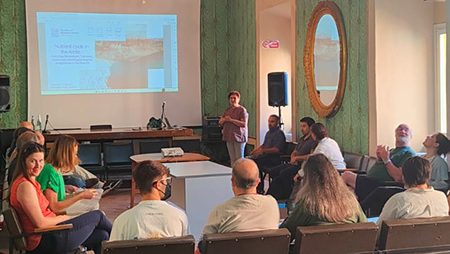Dal 20 al 23 settembre 2022, la sede dell’Istituto di Ricerca sugli Ecosistemi Terrestri del Consiglio Nazionale delle Ricerche (Cnr-Iret) di Porano (TR) ha ospitato il workshop Nutrient Cycle in Arctic regions. In occasione dell’evento, organizzato nell’ambito di un progetto di networking norvegese, una trentina di ricercatori ed esperti in materia si è riunita presso la sede dell’istituto a Villa Paolina.
Il progetto vede il coinvolgimento dell’Italia e del Cnr grazie ad Angela Augusti, coordinatrice delle Terrestrial Ecosystem Flagship di Ny-Ålesund, Svalbards. L’incontro è stato organizzato per condividere conoscenze e creare connessioni tra le discipline che vengono studiate nelle diverse componenti dell’ecosistema Artico (atmosfera, criosfera, biosfera terrestre e marina). In particolare, nell’ultimo giorno i partecipanti hanno discusso su come far convergere le loro conoscenze in due pubblicazioni condivise.
Il primo lavoro, incentrato sul metabolismo dell’ecosistema del Kongsfjorden, nasce allo scopo di valutare la capacità del fiordo di agire da source o da sink dal punto di vista dei flussi di Nutrienti.
L’altra pubblicazione si incentra invece sull’approccio dell’analisi degli isotopi stabili, utilizzato per diversi aspetti del ciclo dei nutrienti allo scopo di valutarne le potenzialità in ambiente Artico e a Ny-Ålesund, nello specifico.


